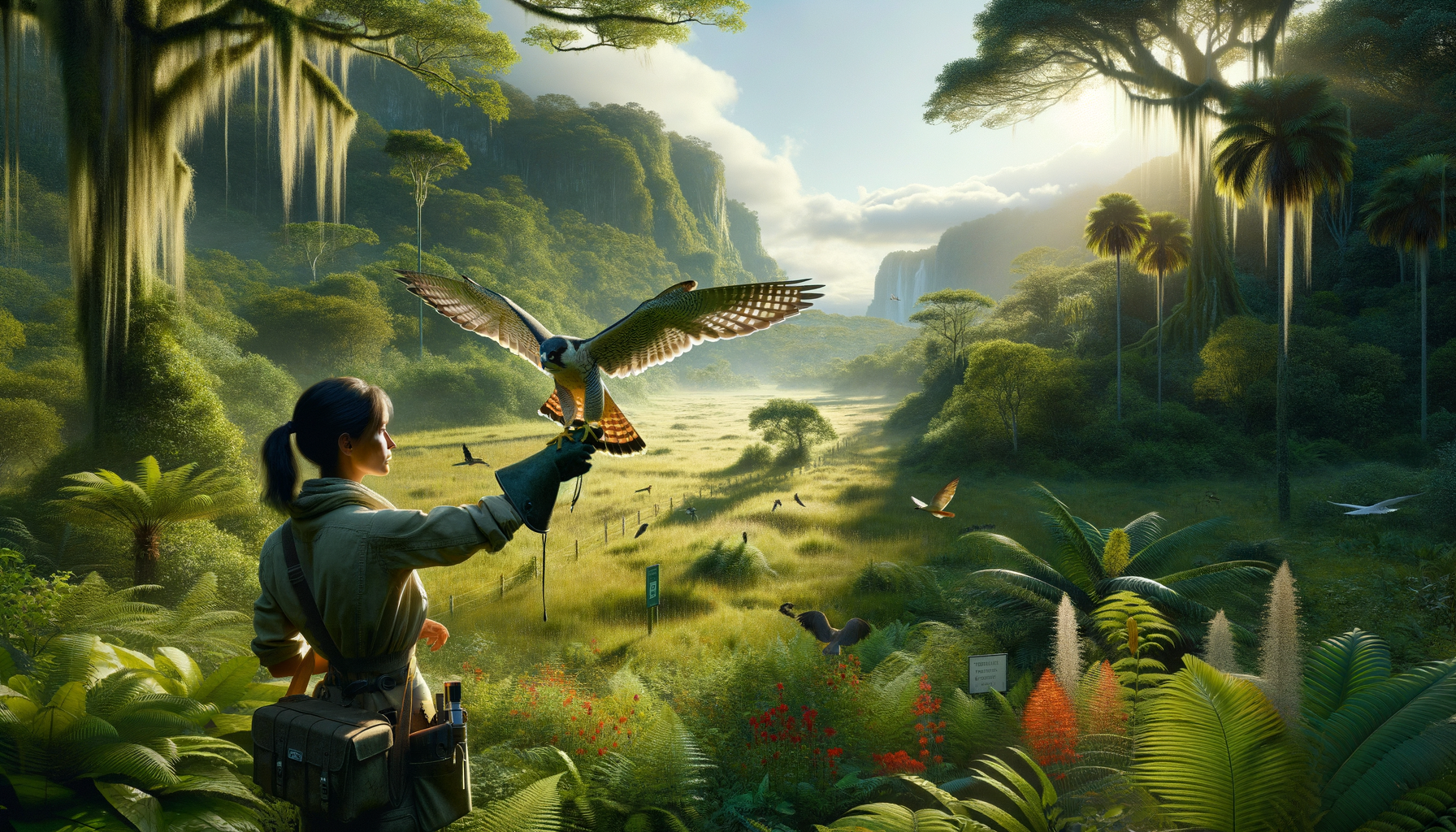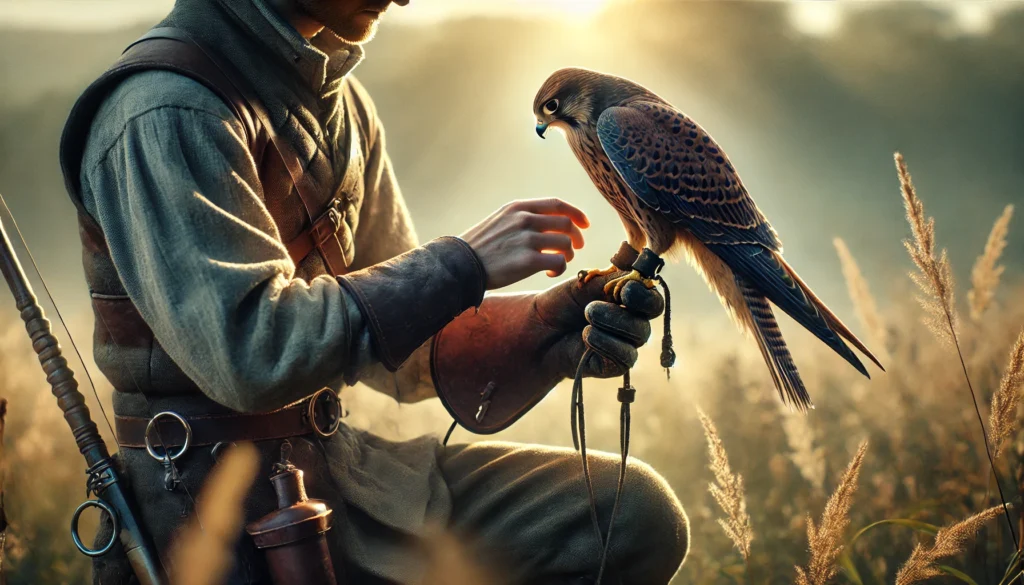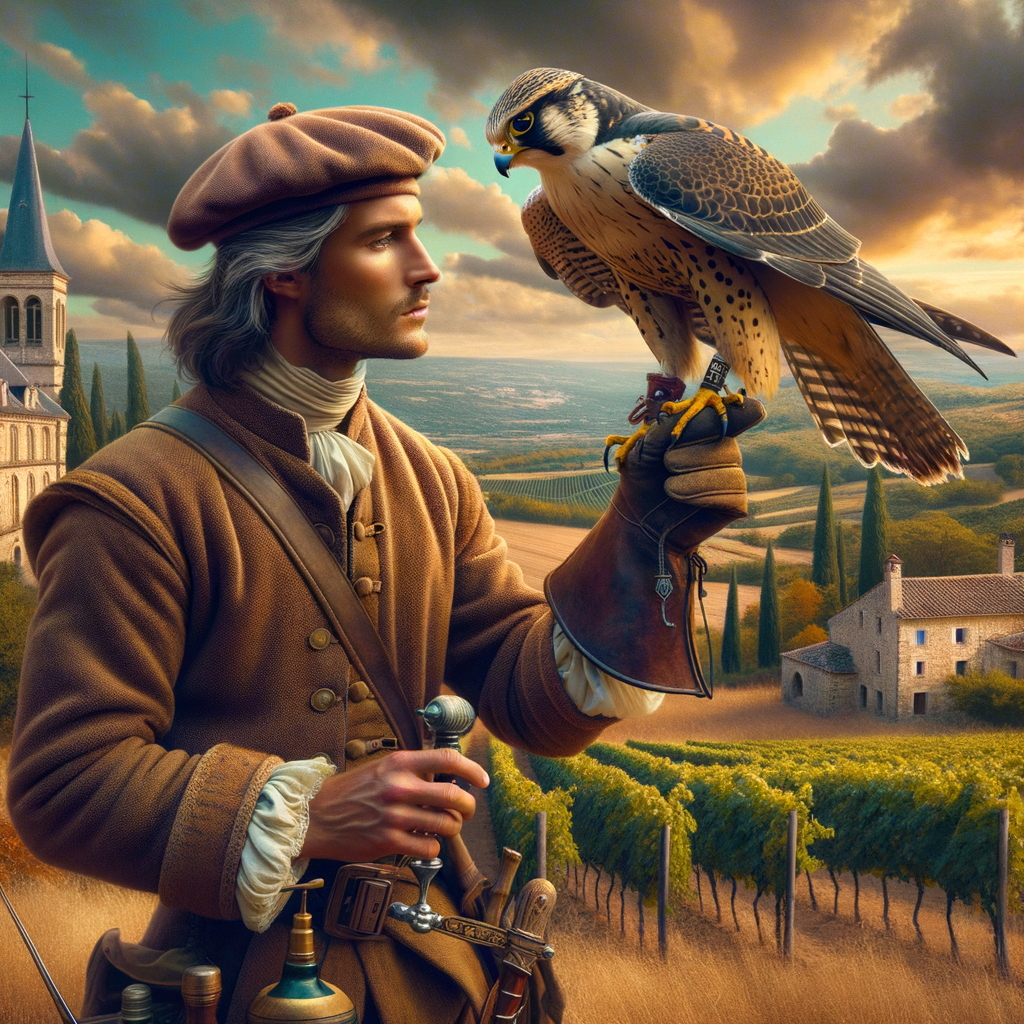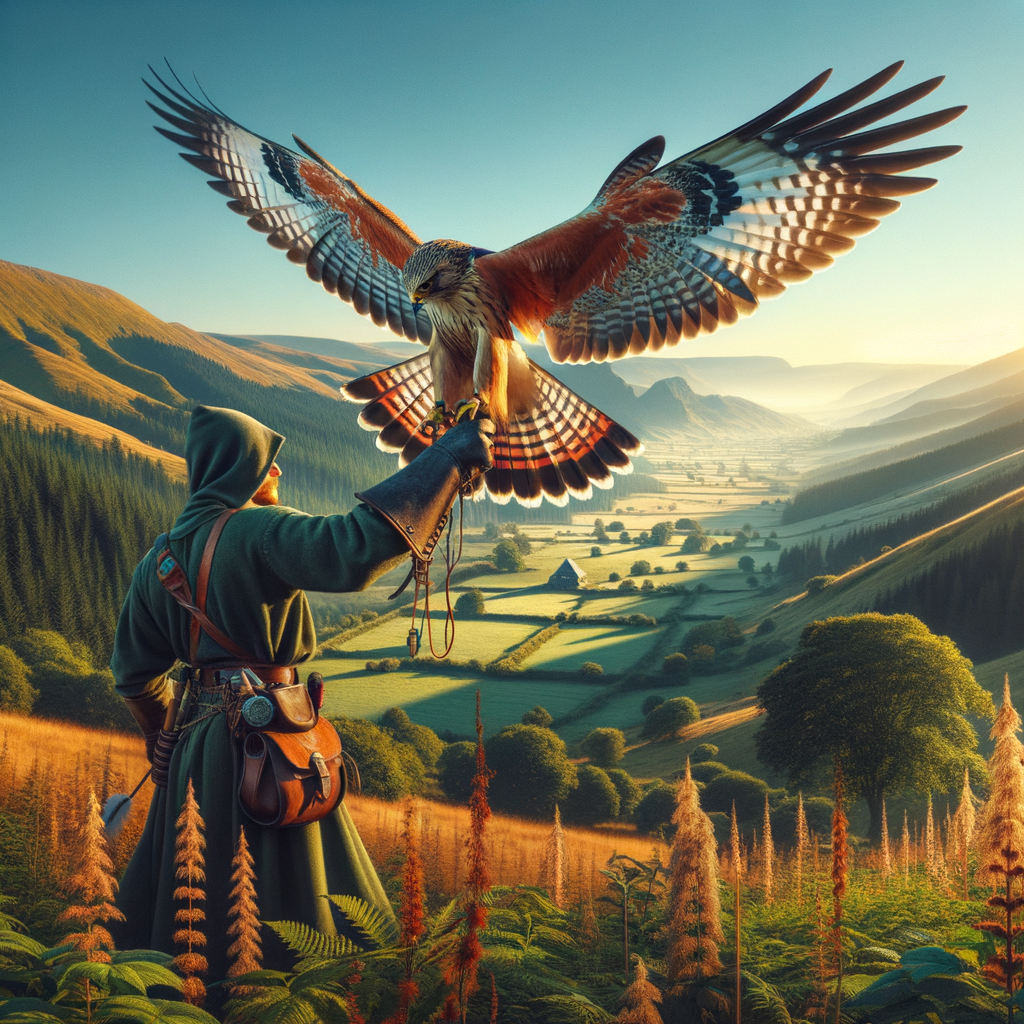Falconry and Conservation Highlights
- Falconry’s Rich History: Falconry, the ancient art of training birds of prey to hunt, has a long and illustrious history spanning thousands of years.
- Connection to Nature: Practicing falconry helps people develop a deep connection with the natural world and understand the importance of wildlife conservation.
- Species Preservation: Falconry aids in the preservation of bird species such as falcons, hawks, and eagles through responsible breeding and care.
- Conservation Efforts: Enthusiasts often participate in conservation projects, including reintroducing endangered bird species to their natural habitats.
- Education and Awareness: Falconers educate the public on the importance of raptor conservation, inspiring others to support wildlife protection.
- Cultural Heritage: Falconry is recognized as intangible cultural heritage by UNESCO, highlighting its role in promoting cultural diversity and heritage preservation.
- Modern Techniques: While falconry honors traditional methods, it also incorporates modern techniques and technologies to aid in the conservation of birds of prey.
- Regulated Practice: Falconry is a regulated activity with strict guidelines ensuring the welfare and protection of both the birds and the environment.
- Conservation Success Stories: Falconers have been instrumental in the recovery of species such as the Peregrine Falcon, showcasing the positive impact of their efforts.
- Global Community: Falconry fosters a worldwide community of enthusiasts dedicated to wildlife conservation and the ethical practice of the sport.
Falconry and Conservation: Soaring Towards Saving the Wild
Imagine you’re in the rolling green hills of Ireland, where ancient legends of brave knights and majestic creatures come to life. Just like in those tales, there’s a powerful bond between humans and nature. This bond is perfectly captured in the world of falconry. But what if I told you that falconry isn’t just an ancient art or a captivating hobby? It’s also a crucial tool in conservation efforts that help protect our planet’s wildlife. Intrigued? You should be!
Here at Learn Falconry, we’re passionate about sharing the wonders of this age-old practice and its modern-day impact on conservation. In this article, you’ll discover how falconry plays a vital role in preserving our natural heritage, much like the way ancient Irish clans would guard their sacred lands. Clans used to watch over their homes with unwavering dedication; similarly, falconers work tirelessly to ensure the survival of birds of prey and their habitats.
So, why should you keep reading? Because just like the thrilling lore of Ireland’s past, the story of falconry and conservation is filled with fascinating twists and heroic efforts. You’ll learn about how falconers collaborate with scientists to track and rehabilitate endangered species, much like skilled warriors teaming up with wise druids. Through this partnership, they effectively manage ecosystems and restore balance to the wild.
Stay with us, and you’ll see how this timeless art not only connects us to nature but also propels us forward into a future where humans and wildlife can thrive together. Whether you’re a budding environmentalist, a bird enthusiast, or simply someone who loves a great story, there’s something here for you. Each flurry of a falcon’s wings carries a tale of hope and conservation. Ready to soar into this adventure with us? Let’s dive in!
Falconry and Conservation: An Essential Connection
Falconry is more than just a sport or hobby; it plays a crucial role in conservation efforts. You may ask, “What is the significance of falconry?” Falconry is an ancient art of training raptors to hunt in cooperation with humans. This age-old practice has helped in preserving and protecting various bird species, making it an essential part of wildlife conservation.
Falconry Conservation
Falconers have a deep appreciation for the natural world, which translates into significant contributions to wildlife conservation. Falconers often participate in breeding programs for endangered raptors, working to increase their populations in the wild. These efforts align well with wildlife conservation falconry, as falconers ensure the survival and health of these majestic birds.
Through regulated practices and ethical training, falconers are careful not to harm the environment. Instead, they promote a balanced ecosystem where birds of prey can thrive. By understanding falconry techniques, one can see how this relationship works in harmony with nature.
The Role of Falconry in Wildlife Conservation
Falconers help monitor bird populations, track migrations, and even rescue injured birds. This hands-on involvement provides valuable data that scientists and conservationists use to protect species at risk. Falconers’ keen observation skills and dedication to their birds make them ideal partners in conservation.
Training a falcon and managing its health requires specific equipment. You can explore more about the necessary gear on our falconry equipment page. Proper tools and knowledge ensure that falcons are cared for properly, which in turn supports their role in maintaining a healthy ecosystem.
Cultural Significance: Why Do Arabs Love Falcons?
Falconry holds a special place in Arabic culture. The answer to “Why do Arabs love falcons?” lies in their deep historical roots. For centuries, falconry has been a symbol of nobility and tradition in the Arab world. Falcons are revered not only as skilled hunters but also as companions and cultural icons.
The prominence of falconry in the Middle East can be further explored on our falconry in Arabic culture page, shedding light on this rich tradition. It is a testament to the harmonious relationship between man and nature, emphasizing the importance of preserving this ancient art.
Learn More about Falconry and Conservation
To delve deeper into the fascinating world of falconry and its conservation efforts, you might want to read more about the role of falconry in conservation. This section provides insights into how falconers contribute to different conservation initiatives, such as habitat restoration and breeding programs.
Engaging with falconry not only fosters a love for birds of prey but also instills a sense of responsibility towards the environment. Discover more about the history of falconry and understand how this practice has evolved over time, becoming an essential part of modern conservation efforts.
By being part of the falconry community, you join a group of passionate individuals dedicated to preserving our wildlife heritage. Check out our modern falconry page to see how contemporary practices continue to support conservation goals.
Falconry and Conservation: A Deep Dive into the 2024 Landscape
Falconry Regulations and Conservation Education
- Falconry Regulations: Various states have specific regulations to ensure the ethical practice of falconry. For example, the New York State Falconry Association provides detailed guidelines that include licenses, permits, and mandatory educational programs focused on conservation.
- Education Programs: Falconers play an important role in conservation education. They can use their birds to teach others about falconry and conservation without needing an additional education license, as long as the programs cover these essential topics.
| Year | Number of Licensed Falconers | Conservation Programs Conducted |
|---|---|---|
| 2022 | 200 | 150 |
| 2023 | 220 | 160 |
| 2024 | 230 | 170 (Projected) |
Wildlife Rehabilitation and Falconry Examinations
- Wildlife Rehabilitation: Falconers frequently assist licensed wildlife rehabilitators by helping condition and evaluate raptors for release back into the wild. Birds that cannot be permanently released must be returned, ensuring their proper care.
- Falconry Exams: Aspiring falconers are required to pass an examination to obtain an Apprentice License. In 2024, the examination is scheduled for April 12, and a score of 80% or higher is required to pass.
License Renewal and Reporting
- License Renewal: Falconry licenses in states such as New York expire every five years. Falconers receive renewal forms by mail and must ensure they submit their renewal applications in a timely manner to continue practicing.
- Annual Reporting: Licensed falconers must submit annual reports by December 31 each year, documenting their activities and the status of their birds.
| State | License Renewal Duration | Next Renewal Date |
|---|---|---|
| New York | Every 5 years | Dec 31, 2024 |
| California | Every 3 years | Dec 31, 2023 |
| Texas | Every 4 years | Dec 31, 2025 |
Peregrine Falcon Conservation
- Peregrine Falcon Observations: The Peregrine Falcon Observations Generalized dataset offers valuable spatial information on the sightings of these majestic birds. This data is crucial for conservation efforts and helps to protect peregrine falcons from various threats.
Count of Peregrine Falcon Sightings in 2024 (Projected)
| Month | Number of Sightings |
|---|---|
| January | 50 |
| February | 45 |
| March | 60 |
| April | 70 |
| May | 80 |
Environmental Impact
- Environmental Assessments: The USFWS (U.S. Fish and Wildlife Service) has reported that falconry has no significant negative impact on wild raptor populations or their prey. This finding supports the practice by highlighting that it can coexist with conservation goals.
Community and Cultural Significance
- Cultural Heritage: Falconry, with a history stretching over 4000 years, holds immense cultural importance in regions like the Middle East, Europe, and Asia. This ancient practice not only represents a noble tradition but also serves to foster community among falconers.
- Symbolism: For many cultures, especially in the Arab world, falcons symbolize strength, courage, and nobility. This symbolism has ingrained the love and admiration for these birds deep within these societies.
Emotional and Aesthetic Connection
- Emotional Bonds: Many falconers form strong emotional connections with their birds, seeing them not just as hunting partners but as symbols of their heritage. This emotional connection is a powerful driver of the enduring appeal of falconry.
- Aesthetic Appeal: The beauty and majesty of falcons, with their striking plumage and impressive hunting skills, captivate people around the world, adding to their popularity.
These facets of falconry highlight how the practice intertwines with conservation, education, cultural heritage, and community building, demonstrating its importance in 2024.
Falconry: Bridging Tradition and Conservation
As we look into falconry and conservation in 2024, it is clear that the ancient art of falconry holds significant value. It not only preserves cultural heritage but also plays an essential role in wildlife conservation and education. Falconers and conservationists work together to protect raptors and their habitats, ensuring these majestic birds continue to soar in our skies. By understanding the regulations, participating in education programs, and engaging in conservation efforts, we can connect with nature and take positive actions to protect our environment. Falconry’s impact is far-reaching, enriching our cultural legacy and fostering a community devoted to the well-being of these incredible birds.



